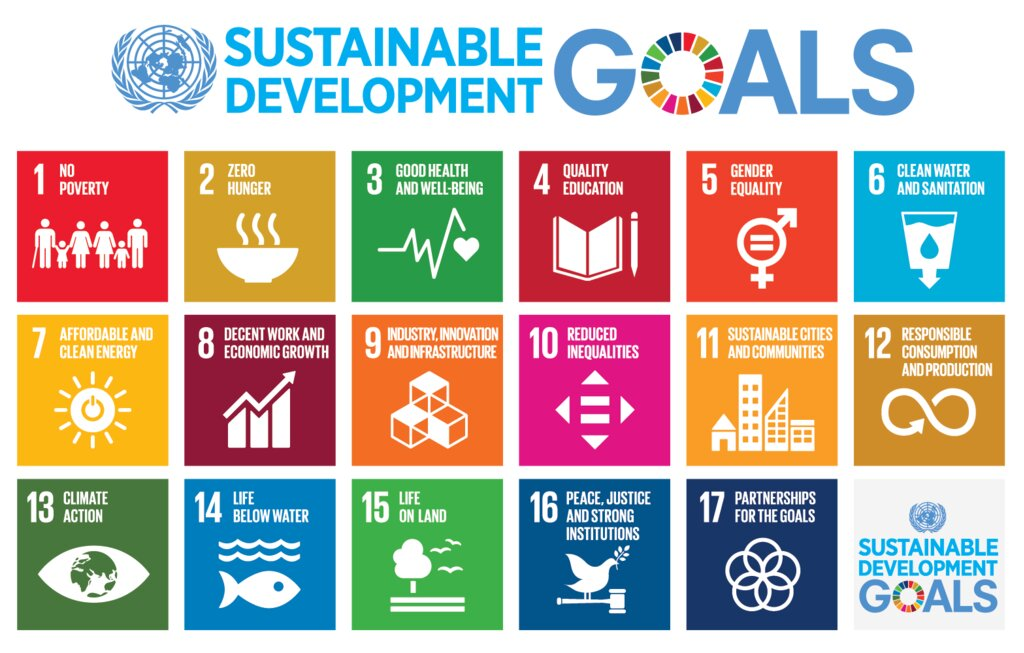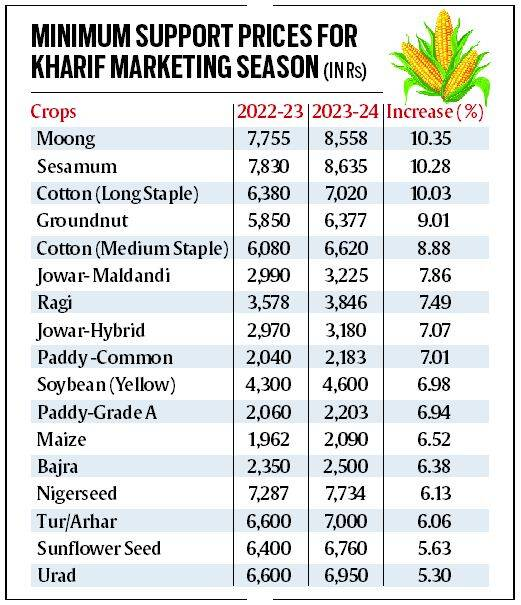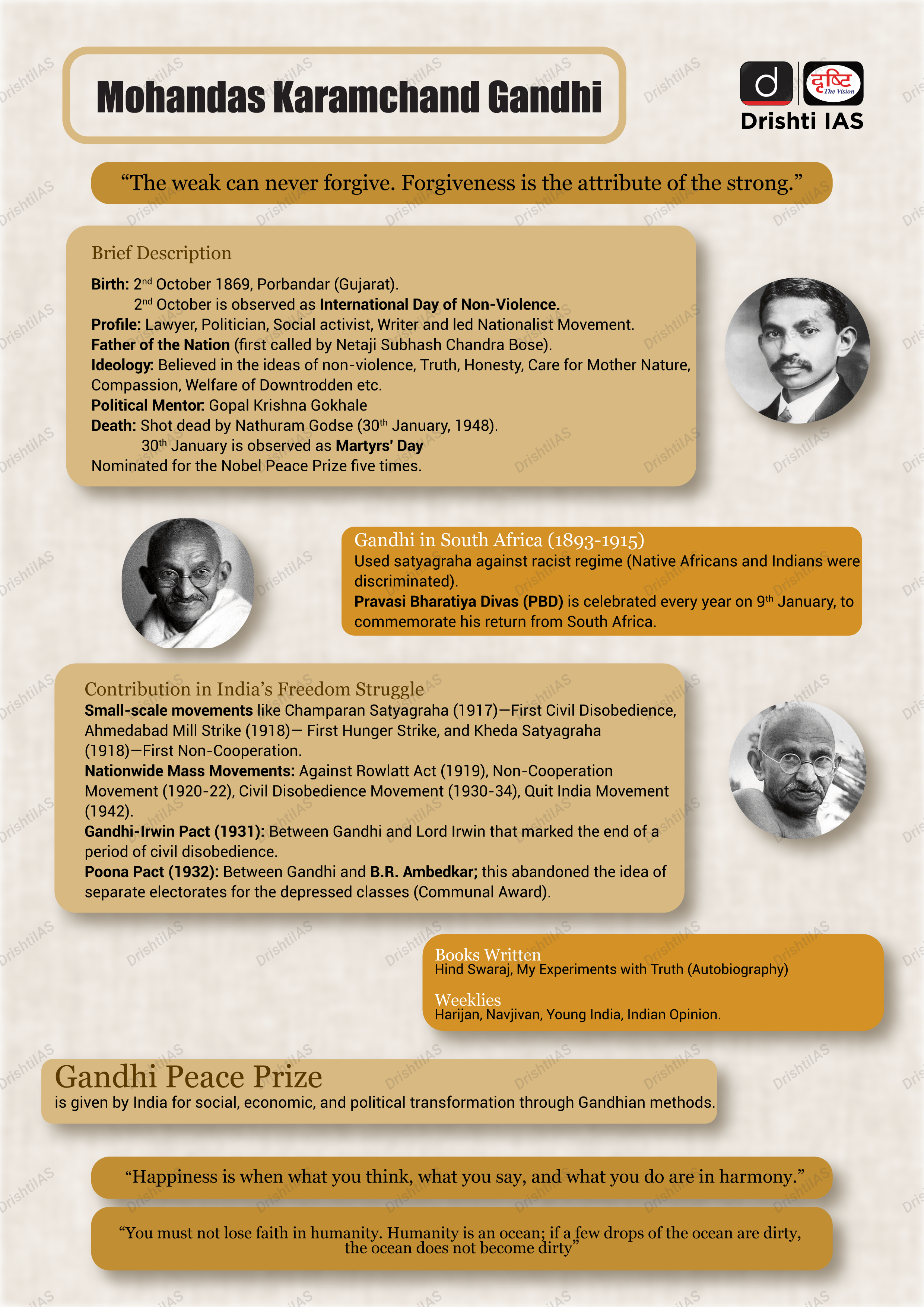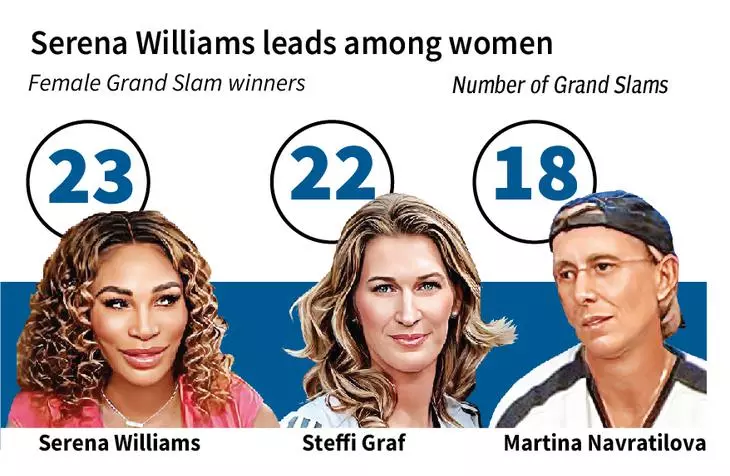Biodiversity & Environment
Tracking SDG7: The Energy Progress Report 2023
For Prelims: SDG7, International Energy Agency (IEA), World Bank, Electricity, Sub-Saharan Africa, Earth Summit, Millennium Development Goals, Paris Agreement on Climate Change.
For Mains: Factors Hindering Achievement of SDG-7.
Why in News?
A recent report, titled "Tracking SDG7: The Energy Progress Report 2023," was released through collaboration between the International Energy Agency (IEA), International Renewable Energy Agency, United Nations Statistics Division, World Bank, and the WHO.
- The report highlights various challenges that hinder progress towards achieving United Nations' Sustainable Development Goal 7 (SDG 7).
What are the Major Highlights of the Report?
- Factors Hindering Achievement of SDG-7:
- Factors such as high inflation, uncertain macroeconomic outlook, debt distress, and limited financial flows have contributed to the world falling off-track in achieving SDG 7.
- The report identifies several major economic factors that hinder the realisation of SDG 7 worldwide:
- Uncertain macroeconomic outlook and high levels of inflation
- Currency fluctuations and debt distress in many countries
- Lack of financing and supply chain bottlenecks
- Tighter fiscal circumstances and soaring prices for materials
- Progress Towards Specific Targets:
- Access to Electricity and Clean Cooking: Global access to electricity increased from 84% to 91% between 2010 and 2021, but annual growth has slowed.
- The number of people without electricity decreased from 1.1 billion in 2010 to 675 million in 2021.
- The goal of universal access to electricity by 2030 remains elusive.
- Access to Clean Cooking: It improved from 2.9 billion people in 2010 to 2.3 billion in 2021, but 1.9 billion people may still lack access by 2030.
- The report indicates that approximately 100 million people who recently transitioned to clean cooking may revert to traditional biomass usage.
- Sub-Saharan Africa is expected to have the highest number of people without access to clean cooking in 2030 (6 out of 10 people).
- Renewable Energy (Target 7.2): Renewable energy uptake has grown since 2010 but needs substantial scaling up.
- The share of renewable energy in total final energy consumption remains low at 19.1% (or 12.5% excluding traditional biomass).
- Meeting international climate and energy goals requires substantial investments of USD 1.4-1.7 trillion annually in renewable electricity generation and related infrastructure through 2030.
- Energy Efficiency (Target 7.3): The current rate of improvement in energy efficiency is not on track to double by 2030.
- The average annual growth of 1.8% falls short of the targeted increase of 2.6% per year between 2010 and 2030.
- International Public Financial Flows (Target 7.a): Financial flows supporting clean energy in developing countries have declined since 2020.
- Financial resources are more than a third lower than the average of the previous decade (2010-2019).
- The decreasing trend in financial flows is concentrated in a small number of countries, posing challenges for achieving SDG 7, particularly for least-developed countries, landlocked developing countries, and small island developing states.
- Access to Electricity and Clean Cooking: Global access to electricity increased from 84% to 91% between 2010 and 2021, but annual growth has slowed.
What is Sustainable Development Goal 7?
- About:
- In 2015, all United Nations Member States came together to adopt the 2030 Agenda for Sustainable Development, aiming to create a harmonious and prosperous future for both humanity and the planet.
- Central to this agenda are the 17 Sustainable Development Goals (SDGs), which serve as a pressing call for action to be embraced by all nations, regardless of their development status.
- Background of SDGs:
- In June 1992, at the Earth Summit in Rio de Janeiro, Brazil, more than 178 countries adopted Agenda 21, a comprehensive plan of action to build a global partnership for sustainable development to improve human lives and protect the environment.
- Member States unanimously adopted the Millennium Declaration at the Millennium Summit in September 2000 at UN Headquarters in New York.
- The Summit led to the elaboration of eight Millennium Development Goals (MDGs) to reduce extreme poverty by 2015.
- 2015 was a landmark year for multilateralism and international policy shaping, with the adoption of several major agreements:
- Sendai Framework for Disaster Risk Reduction (March 2015)
- Addis Ababa Action Agenda on Financing for Development (July 2015)
- Paris Agreement on Climate Change (December 2015)
- Current Status:
- Now, the annual High-level Political Forum on Sustainable Development serves as the central UN platform for the follow-up and review of the SDGs.
- The Division for Sustainable Development Goals (DSDG) in the United Nations Department of Economic and Social Affairs (UNDESA) provides substantive support and capacity-building for the SDGs and their related thematic issues.
- SDG 7:
- Sustainable Development Goal 7 (SDG7) calls for “affordable, reliable, sustainable and modern energy for all” by 2030. It’s three core targets are the foundation for our work: By 2030:
- Target 7.1: ensure universal access to affordable, reliable and modern energy services
- Target 7.2: increase substantially the share of renewable energy in the global energy mix
- Target 7.3: double the global rate of improvement in energy efficiency
- Target 7.a: enhance international cooperation to facilitate access to clean energy research and technology, including renewable energy, energy efficiency and advanced and cleaner fossil-fuel technology, and promote investment in energy infrastructure and clean energy technology
- Target 7.b: expand infrastructure and upgrade technology for supplying modern and sustainable energy services for all in developing countries, in particular least developed countries, small island developing States, and land-locked developing countries.
- Sustainable Development Goal 7 (SDG7) calls for “affordable, reliable, sustainable and modern energy for all” by 2030. It’s three core targets are the foundation for our work: By 2030:
UPSC Civil Services Examination Previous Year Question (PYQ)
Prelims
Q. Consider the following statements: (2016)
- The Sustainable Development Goals were first proposed in 1972 by a global think tank called the ‘Club of Rome’.
- The Sustainable Development Goals have to be achieved by 2030.
Which of the statements given above is/are correct?
(a) 1 only
(b) 2 only
(c) Both 1 and 2
(d) Neither 1 nor 2
Ans: (b)
Mains
Q. Access to affordable, reliable, sustainable and modern energy is the sine qua non to achieve Sustainable Development Goals (SDGs).” Comment on the progress made in India in this regard. (2018)
Q. National Education Policy 2020 isin conformity with the Sustainable Development Goal-4 (2030). It intends to restructure and reorient education system in India. Critically examine the statement. (2020)


Indian Economy
Centre Sets Minimum Support Price for Kharif Crops
For Prelims: Kharif crops, Commission for Agricultural Costs and Prices, Crop Diversification, Union Budget, Swaminathan Commission, Precision agriculture, Organic farming.
For Mains: Minimum Support Price (MSP), MSP for Kharif Crops for 2023-24,
Why in News?
The Indian government has approved the Minimum Support Price (MSP) for kharif crops for the 2023-24 season, aiming to provide fair remuneration to farmers.
- However, concerns have been raised by farmers' organisations regarding the increase not keeping up with rising input costs.
What is Minimum Support Price?
- MSP is the guaranteed amount paid to farmers when the government buys their produce.
- Government announces MSPs for 22 mandated crops and fair and remunerative price (FRP) for sugarcane.
- The mandated crops are 14 crops of the kharif season, 6 rabi crops and two other commercial crops.
- In addition, the MSPs of toria and de-husked coconut are fixed on the basis of the MSPs of rapeseed/mustard and copra, respectively.
- MSP is based on the recommendations of the Commission for Agricultural Costs and Prices (CACP), which considers various factors such as cost of production, demand and supply, market price trends, inter-crop price parity, etc.
- CACP is an attached office of the Ministry of Agriculture and Farmers Welfare, Government of India. It came into existence in January 1965.
- The Cabinet Committee on Economic Affairs (CCEA) chaired by the Prime Minister of India takes the final decision (approve) on the level of MSPs.
- Government announces MSPs for 22 mandated crops and fair and remunerative price (FRP) for sugarcane.
- The MSP is aimed at ensuring remunerative prices to growers for their produce and encouraging crop diversification.
What are Kharif Crops?
- Kharif crops are the crops that are sown in the rainy season, from June to September.
- Some of the major kharif crops are paddy, maize, millets, pulses, oilseeds, cotton and sugarcane.
- Kharif crops account for about 55% of the total foodgrain production in India.
What is the MSP for Kharif Crops for 2023-24?
- The Centre claimed that the hike in MSP for kharif crops for 2023-24 is in line with the Union Budget 2018-19 announcement of fixing the MSP at a level of at least 1.5 times the All-India weighted average cost of production.
- The MSP has been hiked for all 14 kharif crops in the range of 5.3 to 10.35 %. In absolute terms, it has been increased by Rs 128 to Rs 805 per quintal.
- Green gram (moong) got the highest hike of 10.4% over 2022-23 followed by sesamum that saw an increase of 10.3%.
What are the Concerns of the Farmers?
- Inadequate Cost Consideration: They have pointed out that the cost of production used by the CACP to calculate the MSP(A2+FL costs) does not include all the expenses incurred by the farmers such as rent of land, interest on loans, family labour, etc.
- They have demanded that the MSP should be based on the comprehensive cost of production (C2) as recommended by the Swaminathan Commission.
Three Kinds of Production Cost:
- ‘A2’: Covers all paid-out costs directly incurred by the farmer in cash and kind on seeds, fertilisers, pesticides, hired labour, leased-in land, fuel, irrigation, etc.
- ‘A2+FL’: Includes A2 plus an imputed value of unpaid family labour.
- ‘C2’: It is a more comprehensive cost that factors in rentals and interest forgone on owned land and fixed capital assets, on top of A2+FL.
- Lack of Market Reflection: They have also argued that the MSP does not reflect the actual market conditions and the inflationary trends.
- They have demanded that the MSP should be linked to the wholesale price index (WPI) or the consumer price index (CPI) to ensure fair returns to the farmers.
- Doubts over Procurement Mechanism: They have also raised doubts over the procurement mechanism and the availability of adequate infrastructure and storage facilities to ensure that the farmers get the MSP for their produce.
- They have alleged that the government often resorts to import or export policies to manipulate the market prices and undermine the MSP.
- Regional Disparities and Crop-Specific Issues: They have also highlighted the regional disparities and crop-specific issues in the implementation of the MSP.
- They have claimed that the MSP benefits only a few crops and a few states, while leaving out many other crops and regions.
- They have demanded that the MSP should be extended to all crops and all states, and that there should be a legal guarantee for the MSP
Way Forward
- Technological Solutions: Implementing advanced technologies like precision agriculture, IoT (Internet of Things), and remote sensing can help optimise crop yields, reduce production costs, and enhance farmers' access to information.
- Developing mobile applications and platforms that provide real-time market information, weather updates, and best practices to farmers, enabling them to make informed decisions about crop selection and pricing.
- Diversification of Crops: Promoting crop diversification by encouraging farmers to cultivate high-value and climate-resilient crops can reduce their dependence on MSP for traditional crops.
- Introducing innovative farming practices like organic farming, vertical farming, and hydroponics can help farmers tap into niche markets and earn higher profits.
- Public-Private Partnerships (PPPs): Facilitating partnerships between the government, private sector, and farmer organisations can create market linkages, enhance value addition, and improve farmers' bargaining power.
- Collaborative initiatives can include contract farming, agri-logistics infrastructure development, and agro-processing units to ensure a fair and remunerative market for farmers.
UPSC Civil Services Examination Previous Year Question (PYQ)
Q. Consider the following statements: (2020)
- In the case of all cereals, pulses, and oil seeds, the procurement at Minimum Support price (MSP) is unlimited in any State/UT of India.
- In the case of cereals and pulses, the MSP is fixed in any State/UT at a level to which the market price will never rise.
Which of the statements given above is/are correct?
(a) 1 only
(b) 2 only
(c) Both 1 and 2
(d) Neither 1 nor 2
Ans: (d)
Q. Consider the following statements: (2023)
- The Government of India provides Minimum Support Price for niger (Guizotia abyssinica) seeds.
- Niger is cultivated as a Kharif crop.
- Some tribal people in India use niger seed oil for cooking.
How many of the above statements are correct?
(a) Only one
(b) Only two
(c) All three
(d) None
Ans: (c)


Indian History
130th Year of Gandhiji’s Satyagraha
For Prelims: Indian Navy, India and South Africa, Nelson Mandela, Secularism.
For Mains: 130th Year of Gandhiji’s Satyagraha.
Why in News?
On 7th June 2023, the Indian Navy participated in a commemorative event to mark the 130th Anniversary of the start of the struggle against apartheid, started by Mahatma Gandhi (7th June 1893) at the Pietermaritzburg Railway Station near Durban, South Africa.
- INS Trishul, a frontline warship of the Indian Navy visited Durban to commemorate the event.
- This visit also commemorates the 30-year re-establishment of diplomatic relations between India and South Africa.
How was the Satyagraha Movement Started?
- On 7th June, 1893, Mahatma Gandhi faced racial discrimination when he was forced to leave a first-class compartment on a train in Pietermaritzburg, South Africa. Despite purchasing a ticket, a European passenger demanded his removal, citing that non-whites were not allowed in first-class compartments.
- This incident became a pivotal moment for Gandhi, sparking his fight against racial oppression and the development of his philosophy of Satyagraha (nonviolent resistance).
- In recognition of his contribution, Nelson Mandela, then President of South Africa, conferred the Freedom of Pietermaritzburg posthumously on Mahatma Gandhi in a moving ceremony at Pietermaritzburg Railway Station on April 25, 1997.
What were the Contributions of Gandhiji in South Africa?
- Legal and Social Activism:
- Gandhi arrived in South Africa in 1893 to handle a legal case but was inspired to fight for the rights of Indians in the country.
- He organized Indians in Durban and founded the Natal Indian Congress in 1894 to advocate for voting rights for Indians.
- He confronted discrimination and racism through his law practice, representing Indians and addressing their grievances.
- He mobilized support for the welfare of Indians and established the Transvaal British Indian Association in Johannesburg in 1903.
- Satyagraha and Passive Resistance:
- Gandhi launched his first Satyagraha (nonviolent resistance) campaign in Johannesburg in 1906 against an ordinance that imposed restrictions on Asians.
- He organized mass meetings and encouraged civil disobedience to challenge discriminatory laws.
- Gandhi faced imprisonment multiple times for his nonviolent protests, including the famous Volkrust Satyagraha in 1913.
- Establishment of Communal Living:
- Gandhi founded the Phoenix Settlement in Durban in 1904 as a community living experiment.
- He established the Tolstoy Farm near Johannesburg in 1910 to prepare Satyagrahis (followers of nonviolence).
- These initiatives aimed to foster self-reliance, promote communal harmony, and provide training in practical skills.
- Mobilization of Indian Community:
- Gandhi's activism and leadership inspired the Indian community to stand up against discriminatory laws and regulations.
- His methods of nonviolent resistance and civil disobedience had a significant impact on the South African Native National Congress, formed in 1912.
- Gandhi's political ideas and mobilization efforts played a role in shaping the formation and direction of the South African independence movement.
- Legal Reforms and Recognition of Indian Rights:
- Through his activism and negotiations, Gandhi compelled the South African government to pass the Indian Relief Act in 1914.
- This act abolished several discriminatory laws and recognized the rights of Indians in South Africa.
- Gandhi's efforts laid the groundwork for future reforms and set a precedent for nonviolent resistance in the struggle against oppression.
UPSC Civil Services Examination, Previous Year Question (PYQ)
Prelims
Q1. Who among the following is associated with ‘Songs from Prison’, a translation of ancient Indian religious lyrics in English? (2021)
(a) Bal Gangadhar Tilak
(b) Jawaharlal Nehru
(c) Mohandas Karamchand Gandhi
(d) Sarojini Naidu
Ans: (c)
Q2. With reference to the British colonial rule in India, consider the following statements: (2019)
- Mahatma Gandhi was instrumental in the abolition of the system of ‘indentured labour’.
- In Lord Chelmsford’s ‘War Conference’, Mahatma Gandhi did not support the resolution on recruiting Indians for World War.
- Consequent upon the breaking of Salt Law by Indian people, the Indian National Congress was declared illegal by the colonial rulers.
Which of the statements given above are correct?
(a) 1 and 2 only
(b) 1 and 3 only
(c) 2 and 3 only
(d) 1, 2 and 3
Ans: (b)
Mains
Q. Bring out the constructive programmes of Mahatma Gandhi during Non-Cooperation Movement and Civil Disobedience Movement. (2021)

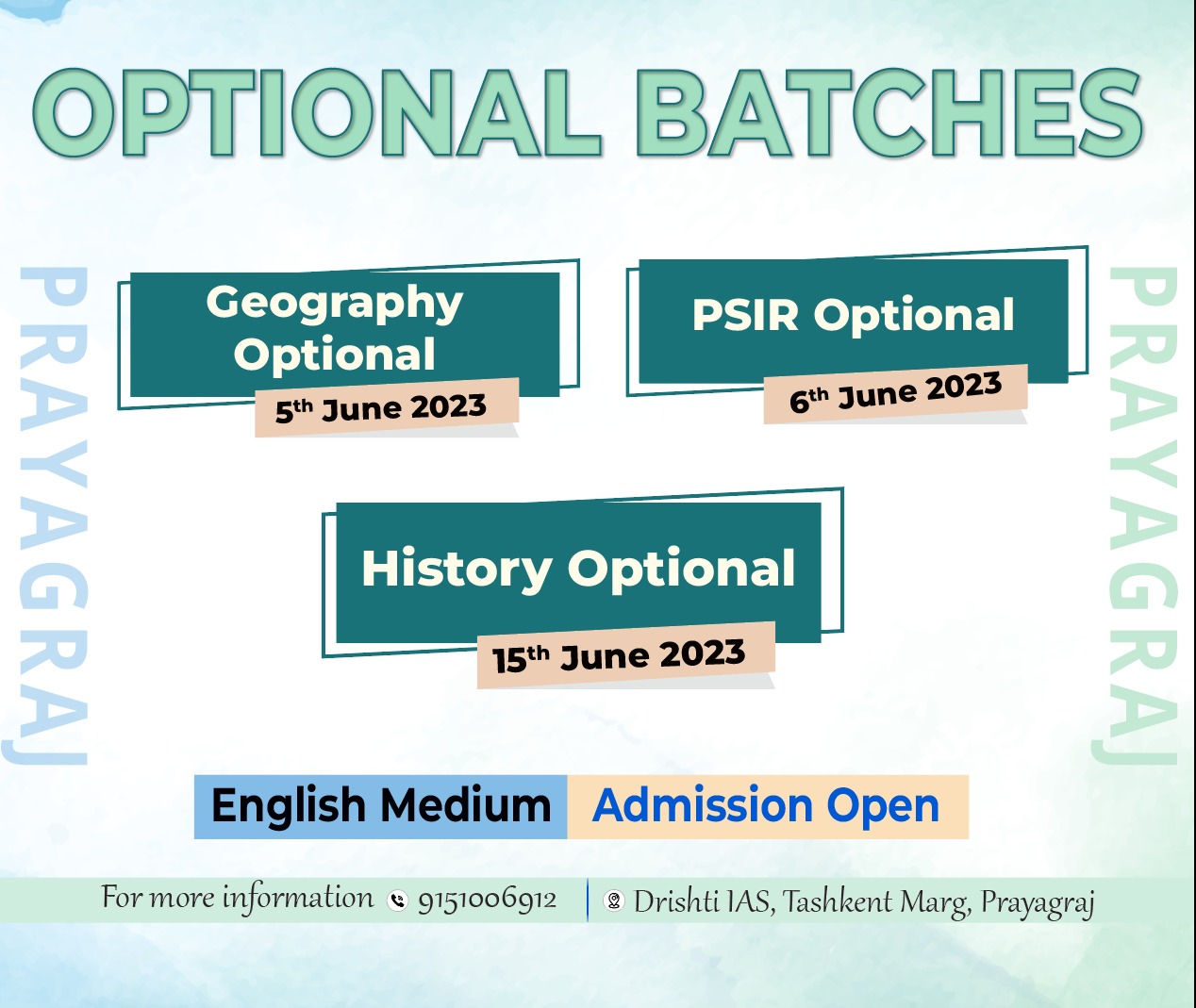
Biodiversity & Environment
Ground Level Ozone Pollution in Delhi: CSE
For Prelims: CSE, CPCB, Ozone Pollution, AQI, NCAP.
For Mains: Ground Level Ozone Pollution in Delhi.
Why in News?
According to a new analysis by the Centre for Science and Environment (CSE), parts of the Delhi-NCR region witnessed ground-level ozone exceeding the national standards on 87 out of 92 days between March and May in 2023.
- The analysis, based on data from the Central Pollution Control Board (CPCB), highlights the duration and geographical spread of Ozone Pollution, its impact during different seasons, and the underlying causes.
Note: CSE is a public interest research and advocacy organisation based in New Delhi.
It researches into, lobbies for and communicates the urgency of development that is both sustainable and equitable.
What are the Findings?
- Duration of Exceedance:
- While ground-level ozone pollution in Delhi-NCR was lower in 2023 compared to the past five years, the duration of its exceedance has increased.
- This phenomenon is of concern as elevated ozone levels persist even hours after sunset, contrary to expectations.
- This summer, at the stations which reported exceedance the rolling 8-hr average stayed above standard for 4.9 hours on average, which is up from 4.6 hours observed last summer.
- The WHO Air Quality Guidelines for ambient (outdoor) ozone is 100 μg/m3 (~50 ppb) measured as 8-hr maximum moving average within a day.
- Not Specific to Seasons:
- Ozone pollution is not limited to specific seasons. Even during winter months, when cold and foggy conditions inhibit ground level ozone formation, Delhi-NCR experienced excess ozone levels on multiple days in January 2023.
- Ozone levels exceeded the standard at multiple stations on 26 days in January 2023.
- Ozone pollution is not limited to specific seasons. Even during winter months, when cold and foggy conditions inhibit ground level ozone formation, Delhi-NCR experienced excess ozone levels on multiple days in January 2023.
- Impact on Specific Areas:
- New Delhi and South Delhi areas were the most affected by ground-level ozone pollution.
What is Ground-Level Ozone?
- About:
- Ground-level ozone, also known as Tropospheric ozone, is a colorless and highly irritating gas that forms near the Earth's surface, typically within two miles above the ground.
- Ground-level ozone is not directly emitted from any specific source. It is formed through complex interactions between Nitrogen Oxides (NOx), Volatile Organic Compounds (VOCs), and carbon monoxide emitted from vehicles, power plants, factories, and other combustion sources. These compounds undergo cyclic reactions in the presence of sunlight to generate ground-level ozone.
- Impact:
- When NOx and VOCs interact in the presence of sunlight, they undergo complex chemical reactions that lead to the formation of ground-level ozone. Ground-level ozone is a significant air pollutant and can have harmful effects on human health, vegetation, and ecosystems.
- Initiatives:
UPSC Civil Services Examination Previous Year Question (PYQ)
Q. Consider the following: (2019)
- Carbon monoxide
- Methane
- Ozone
- Sulphur dioxide
Which of the above are released into atmosphere due to the burning of crop/biomass residue?
(a) 1 and 2 only
(b) 2, 3 and 4 only
(c) 1 and 4 only
(d) 1, 2, 3 and 4
Ans: (d)


Indian Economy
Surplus Liquidity
For Prelims: Repo rate, reverse rapo rate, monetary policy committee, concepts related to inflation
For Mains: Impact of increased liquidity, factors leading to increase in liquidity in the market
Why in News?
Recently, the net liquidity in the banking system in India increased to Rs 2.59 lakh crore on June 4, 2023. However, the surplus liquidity in the banking system is likely to decline to around Rs 1.5 lakh crore over the next few days from the current level of Rs 2.1 lakh crore.
- The net liquidity in the banking system is represented by the amount of money absorbed by the Reserve Bank of India (RBI) from the system.
What is Surplus Liquidity?
- About:
- Surplus liquidity occurs where cashflows into the banking system persistently exceed withdrawals of liquidity from the market by the central bank.
- Liquidity in the banking system refers to readily available cash that banks need to meet short-term business and financial needs.
- Surplus liquidity occurs where cashflows into the banking system persistently exceed withdrawals of liquidity from the market by the central bank.
- Causes of Increased Liquidity:
- Advance tax and goods and services tax (GST) payments,
- The deposit of withdrawn Rs 2,000 notes,
- Redemption of government bonds,
- Higher government spending,
- The sale of dollars by the RBI to defend the rupee from depreciation.
- Impact of Increased liquidity:
- It may lead to increased levels of inflation.
- Interest rates in the market will remain low.
- RBI's Measures:
- The RBI takes action if liquidity levels deviate from its comfort range.
- The RBI, under its Liquidity Adjustment Facility, infuses liquidity in the banking system via repos and sucks it out using reverse repos after assessing liquidity conditions.
- The RBI also uses a 14-day variable rate repo and/or reverse repo operation.
What are the Tools Used by RBI to control Money Supply?
| Various Instruments of Monetary Policy | |
| Repo Rate: |
|
|
Reverse Repo Rate: |
|
|
Liquidity Adjustment Facility (LAF): |
|
|
Marginal Standing Facility (MSF): |
|
| Corridor: |
|
|
Bank Rate: |
|
|
|
|
Statutory Liquidity Ratio (SLR): |
|
|
Open Market Operations (OMOs):
|
|
|
Market Stabilisation Scheme (MSS):
|
|
UPSC Civil Services Examination, Previous Year Question (PYQ)
Prelims:
Q. The money multiplier in an economy increases with which one of the following?(2021)
(a) Increase in the Cash Reserve Ratio in the banks
(b) Increase in the Statutory Liquidity Ratio in the banks
(c) Increase in the banking habit of the people
(d) Increase in the population of the country
Ans: (c)
Exp:
- In macroeconomics, the money multiplier is important because it determines the money supply.
- Money multiplier shows the magnified change in the money supply that results from the infusion of additional reserves into the banking system.
- The most basic multiplier used in computing the multiplier effect is calculated as change in income / change in spending.
- The money multiplier effect can be seen in a country’s banking system. An increase in bank lending should translate to an expansion of a country’s money supply. Thus, the money multiplier in an economy increases with an increase in the banking habits of the people.
- Therefore, option (c) is the correct answer.
Mains
Question: Do you agree with the view thatsteady GDP growth and low inflation have left the Indian economyin good shape? Give reasons in support of your arguments. (2019)


Governance
India's Energy Transition Through States
For Prelims: Energy Transition, Net-Zero Emissions by 2070
For Mains: Significance of engaging states in India's energy transition, Challenges Related to India’s Energy Sector, Initiatives Shaping India’s Energy Transition
Why in News?
India's energy transition through states plays a crucial role in achieving national targets and fulfilling global climate commitments. The upcoming G20 forum presents an opportunity for the country to propose a multiple energy pathways approach to accommodate diverse contexts.
- India has the goal of achieving 50% non-fossil electricity generation capacity by 2030 and attaining net-zero emissions by 2070,
- India's energy transition hinges on engaging states, as they play a vital role in the governance of energy production and usage.
Why do States Matter?
- Implementing National Targets:
- Tailoring Strategies to Local Contexts:
- The diversity of India's states necessitates a localized approach to energy transition, considering their unique contexts, resources, and development trajectories.
- Decentralized Implementation:
- While the central government sets national goals, states have the responsibility to implement policies and action plans at the grassroots level.
- Their active participation is vital for translating national aspirations into on-ground realities.
- While the central government sets national goals, states have the responsibility to implement policies and action plans at the grassroots level.
- Tailoring Strategies to Local Contexts:
- Addressing Legacy Issues:
- States play a pivotal role in addressing legacy issues plaguing the electricity sector. This includes reducing high distribution losses, improving the reliability of power supply, and enhancing service quality, which are crucial for a smooth energy transition.
- Pioneering Policy Innovations:
- Laboratories of Innovation:
- States serve as laboratories for policy experimentation and innovation.
- For example, early initiatives by Gujarat and Rajasthan on solar, and Maharashtra and Tamil Nadu on wind energy technologies, have contributed significantly to renewable energy uptake at the national level.
- Similarly, PM KUSUM is an adoption of successful State experiments on the solarisation of agriculture at a national scale.
- States serve as laboratories for policy experimentation and innovation.
- Influencing National Policies:
- Successful State-level experiments and innovative approaches in renewable energy adoption serve as influential models for the development of national policies and frameworks.
- Laboratories of Innovation:
- Harnessing State Resources:
- Leveraging Localized Resources:
- Each state in India possesses a unique mix of renewable energy resources, such as abundant solar radiation, wind corridors, and biomass availability. States can harness these resources to promote renewable energy generation and transition away from fossil fuels.
- Promoting Distributed Generation:
- States can encourage decentralized renewable energy solutions, such as rooftop solar installations and community-based projects, to harness their localized resources effectively and promote community participation.
- Leveraging Localized Resources:
- Importance of a State-level Framework:
- Comprehensive Understanding:
- A state-level framework provides a holistic understanding of each state's energy transition plans, actions, and governance processes.
- It enables better coordination, collaboration, and alignment between the central government and states.
- Evidence-Based Policy Choices:
- The framework facilitates evidence-based decision-making, ensuring that policies and interventions are based on robust analysis of state-level preparedness, inter-linkages, and potential constraints. It promotes informed choices and efficient resource allocation.
- Inclusive Stakeholder Engagement:
- A state-level framework encourages the active participation of stakeholders, including local communities, industry, and civil society.
- It promotes transparency, accountability, and stakeholder ownership in the energy transition process.
- A state-level framework encourages the active participation of stakeholders, including local communities, industry, and civil society.
- Comprehensive Understanding:
What are the Challenges Associated with States in Energy Transition?
- Varying State Priorities:
- Balancing state-specific objectives with national energy goals can be challenging, as states have diverse priorities that may not always align with the overall transition agenda.
- India’s achievements on its 2022 target for 175 GW renewable energy offer some insights into the complexities. While it achieved a significant portion of the target, only Gujarat, Karnataka, and Rajasthan met their individual targets. Moreover, about 80% of the current renewable energy capacity is confined to Six states in the west and south of India.
- Resource Constraints:
- Some states face limitations in terms of financial resources, infrastructure, and technological capabilities, which can hinder their ability to implement renewable energy projects and transition smoothly.
- Regulatory Framework:
- Inconsistent or complex regulatory frameworks across states can create barriers for investors and developers, leading to delays in project implementation and slower progress in the energy transition.
- Grid Integration:
- Integrating renewable energy sources into the existing power grid can be challenging, especially in states with inadequate grid infrastructure. This can result in curtailment of renewable energy generation and transmission constraints.
- Inter-State Coordination:
- Coordinating efforts and sharing resources among states is critical for a harmonized energy transition. However, differences in policies, priorities, and administrative processes can create coordination challenges between states.
What are the Other Initiatives Shaping India’s Energy Transition?
- Pradhan Mantri Sahaj Bijli Har Ghar Yojana (SAUBHAGYA).
- Green Energy Corridor (GEC).
- National Smart Grid Mission (NSGM) and Smart Meter National Programme.
- Faster Adoption and Manufacturing of (Hybrid &) Electric Vehicles (FAME).
- International Solar Alliance (ISA).
Way Forward
- State Synergy:
- Unleash the power of collaboration between states, forging alliances that harness their diverse strengths and accelerate the energy transition journey.
- Green Financing Express:
- Create state-level green financing mechanisms that ride the wave of creativity, attract investments and unlock funding for renewable energy projects.
- People-Powered Revolution:
- Ignite a people-powered revolution, empowering individuals and communities to become ambassadors of change, driving the energy transition from grassroots to greatness.
- State Trailblazers:
- Recognize and celebrate state trailblazers who defy limits, setting examples that inspire others, and propel the energy transition forward with their audacious vision and action.
UPSC Civil Services Examination, Previous Year Question (PYQ)
Prelims
Q. With reference to the Indian Renewable Energy Development Agency Limited (IREDA), which of the following statements is/are correct? (2015)
- It is a Public Limited Government Company.
- It is a Non-Banking Financial Company.
Select the correct answer using the code given below:
(a) 1 only
(b) 2 only
(c) Both 1 and 2
(d) Neither 1 nor 2
Ans: (c)
Mains
Q. “Access to affordable, reliable, sustainable and modern energy is the sine qua non to achieve Sustainable Development Goals (SDGs)”.Comment on the progress made in India in this regard. (2018)


Important Facts For Prelims
Roland-Garros
Why in News?
The Stade Roland Garros in Paris is hosting the Roland-Garros tournament also known as the French Open, which took place from May 28, 2023, until June 11, 2023.
What is Roland-Garros?
- About:
- Roland-Garros is one of the four Grand Slam tournaments in tennis, along with the Australian Open, Wimbledon and the US Open. It is held over two weeks at the Stade Roland Garros in Paris, France.
- It is the only Grand Slam event played on clay courts, which makes it the most physically demanding and tactically challenging tournament in the world.
- History and Significance of Roland-Garros:
- The tournament and venue are named after Roland Garros, a French aviator who was the first person to fly across the Mediterranean Sea in 1913.
- He was also a pioneer of aerial warfare during World War I and died in combat in 1918.
- The tournament was first held in 1891 as a national championship for French players only.
- It became open to international players in 1925 and moved to its current location in 1928.
- It was the first Grand Slam tournament to join the “Open” era in 1968, allowing both amateurs and professionals to compete.
- The tournament and venue are named after Roland Garros, a French aviator who was the first person to fly across the Mediterranean Sea in 1913.
Note: Rafal Nadal has won a record 14 titles at Roland-Garros, including four consecutive ones from 2005 to 2008 and five consecutive ones from 2010 to 2014. He also holds the record for the most match wins (105) and the highest winning percentage (98.2%) at the tournament. Unfortunately, he is not participating in the Roland-Garros 2023 tournament.
- Major Features:
- French Fair: Roland-Garros is not only a tennis tournament, but also a cultural and artistic event that showcases the French flair and elegance. Courts: Roland-Garros has 20 courts, including three main show courts: Court Philippe-Chatrier, Court Suzanne-Lenglen and Court Simonne-Mathieu.
- The courts are made of crushed brick and limestone, which give them their distinctive red colour and slow down the ball speed.
- Major Trophies: The two of the most iconic trophies in the event are: the Coupe des Mousquetaires (Musketeers’ Trophy) for men and the Coupe Suzanne-Lenglen (Suzanne Lenglen Trophy) for women.
- The trophies are named after four French tennis legends: René Lacoste, Jean Borotra, Henri Cochet and Jacques Brugnon for men, and Suzanne Lenglen for women.
- French Fair: Roland-Garros is not only a tennis tournament, but also a cultural and artistic event that showcases the French flair and elegance. Courts: Roland-Garros has 20 courts, including three main show courts: Court Philippe-Chatrier, Court Suzanne-Lenglen and Court Simonne-Mathieu.
What is Grand Slam?
- Grand Slam tournaments, also called majors, are the four most important annual tennis events.
- The Grand Slam itinerary consists of the Australian Open in mid-January, the French Open from around late May to early June, Wimbledon in June–July, and the US Open in August–September.
- Each tournament is played over a two-week period.
- The Australian and United States tournaments are played on hard courts, the French on clay, and Wimbledon on grass.
- Wimbledon is the oldest, founded in 1877, followed by the US in 1881, the French in 1891, and the Australian in 1905.
- Novak Djokovic equalised Rafael Nadal’s record of most grand slam titles by winning the 2023 Australian Open.
UPSC Civil Services Examination, Previous Year Question (PYQ)
Q. Consider the following statements in respect of the 44th Chess Olympiad, 2022: (2023)
- It was the first time that Chess Olympiad was held in India.
- The official mascot was named ‘Thambi’.
- The trophy for the winning team in the open section is the Vera Menchik Cup.
- The trophy for the winning team in the women's section is the Hamilton-Russell Cup.
How many of the statements given above are correct?
(a) Only one
(b) Only two
(c) Only three
(d) All four
Ans: (b)


Important Facts For Prelims
X-raying a Single Atom
Why in News?
Recently, scientists achieved a remarkable milestone by identifying an element through X-ray imaging of a single atom.
- X-rays, discovered by Wilhelm Conrad Rontgen in 1895, have become an integral part of various fields, including medicine and security.
- Previously, the smallest amount of sample that can be X-rayed is an attogram, (which is about 10,000 atoms or more). Scientists have long wanted to be able to X-ray just one atom, which has now been made possible.
What is the new technique for X-raying a single atom?
- Technique:
- Scientists have used a technique called synchrotron X-ray scanning tunneling microscopy (SX-STM) to detect the X-ray signature of a single atom for the first time.
- SX-STM combines synchrotron X-rays, which are high-energy X-rays produced by accelerating electrons in a circular track, with scanning tunneling microscopy, which uses a sharp metal tip to interact with the electrons of a sample at very close distances.
- The synchrotron X-rays excite the sample, and the metal tip collects the photoelectrons emitted by the atom, revealing its identity and chemical state.
Materials Science:
- Materials science, the study of the properties of solid materials and how those properties are determined by a material's composition and structure.
- Importance for Material Science:
- It provides insights into the atomic-scale properties and interactions of materials.
- Enables precise understanding of molecular structures and behaviors.
- Facilitates the design and development of novel materials and devices.
- Enhances knowledge of catalytic activity, biomolecular interactions, and quantum phenomena.
What is X-ray?
- It is a form of electromagnetic radiation with higher energy, high frequency, and shorter wavelength than visible light.
- It can pass through most objects, including the body, and produce internal structure images.
- Produced by accelerating or decelerating charged particles or exciting atoms.
- Widely used in science, medicine, industry, and security applications.
- Used for detecting bone fractures, diagnosing diseases, identifying materials, and scanning luggage.
UPSC Civil Services Examination, Previous Year Questions (PYQs)
Prelims
Q1. With reference to Visible Light Communication (VLC) technology, which of the following statements are correct? (2020)
- VLC uses electromagnetic spectrum wavelengths 375 to 780 nm.
- VLC is known as long-range optical wireless communication.
- VLC can transmit large amounts of data faster than Bluetooth.
- VLC has no electromagnetic interference.
Select the correct answer using the code given below:
(a) 1, 2 and 3 only
(b) 1, 2 and 4 only
(c) 1, 3 and 4 only
(d) 2, 3 and 4 only
Ans: (c)
Exp:
- Visible Light Communication (VLC) systems employ visible light for communication that occupy the electromagnetic spectrum from 375 nm to 780 nm. Hence, statement 1 is correct.
- VLC is known as short-range optical wireless communication. Hence, statement 2 is not correct.
- Li-Fi, a kind of VLC, has a range of approximately 10 meters and it cannot pass through walls or any solid object.
- VLC can transmit large amounts of data faster than Bluetooth. The VLC uses visible light for communication to provide high speed internet up to 10 Gb/s while Bluetooth 4.0 promises speeds up to 25 Mb/s. Hence, statement 3 is correct.
- VLC has no electromagnetic interference. The radio frequency (RF) based signals have the problem of interference with other RF signals such as its interference with pilot navigational equipment signals in aircraft. Therefore, in the areas that are sensitive to electromagnetic radiation (such as aircrafts) VLC can be a better solution. Hence, statement 4 is correct. Therefore, option (c) is the correct answer.
Q2. Assertion (A): Radio waves bend in a magnetic field.
Reason (R): Radio waves are electromagnetic in nature. (2008)
Examine these two statements carefully and select the answers to these items using the code given below:
(a) Both A and R are individually true and R is the correct explanation of A
(b) Both A and R are individually true but R is not the correct explanation of A
(c) A is true but R is false
(d) A is false but R is true
Ans: (A)
- The electromagnetic (EM) spectrum is the range of all types of EM radiation. Radiation is energy that travels and spreads out. The visible light that comes from a lamp in houses and the radio waves that come from a radio station are two types of electromagnetic radiation. The other types of EM radiation that make up the electromagnetic spectrum are microwaves, infrared light, ultraviolet light, X-rays and gamma-rays.
- In 1873, Scottish physicist James Clerk Maxwell developed a unified theory of electromagnetism, which dealt with electrically charged particle interacting with each other and with magnetic fields. He proved that magnetic poles come in pairs that attract and repel each other, much like electric charges through his Maxwell equations.
- Electromagnetic waves are formed when an electric field is coupled with a magnetic field. Magnetic electric fields of an electromagnetic wave are perpendicular to each other and to the direction of the wave.
- Radio waves are at the lowest range of the EM spectrum, with frequencies of up to about 30 GHz, and wavelengths greater than about 10 millimetres (0.4 inches).
- Radio waves are waves of the electromagnetic spectrum (electro magnetic in nature), thus these waves bend in both magnetic and electric fields. Hence, Assertion (A) is correct, and Reason (R) is correct explanation of Assertion (A). Therefore, option (a) is the correct answer.


Important Facts For Prelims
Claims of Burial and Rock Art by Homo Naledi
Why in News?
Recently, a study has been published, which suggests that Homo Naledi, an ancient human species, may have buried their dead and created meaningful symbols in a cave.
- However, these claims have sparked controversy within the scientific community.
What is Homo Naledi?
- Homo Naledi is a species of human discovered in the Rising Star cave system, a UNESCO World Heritage Site in South Africa in 2013.
- The remains of at least 15 individuals, including adults, juveniles, and infants, were found, making it the largest collection of a single hominin species in Africa.
- Homo naledi exhibits a combination of primitive and modern features and is not a direct ancestor of modern humans.
- These short-statured, small-brained ancient cousins are thought to have lived in Southern Africa between 335,000 and 241,000 years ago (possibly up to 2 million years ago).
What Are the Key Highlights of the Study?
- Burial Claims:
- Homo Naledi deliberately buried their dead, which would challenge existing notions about advanced mortuary behavior.
- Humans exhibit a unique behavior among primates by burying their dead, which sets them apart from other animals. This behavior is known as Mortuary behavior, characterized by social acts and a complex understanding of death.
- Previously, the earliest evidence of Mortuary behavior was found among Neanderthals and modern humans, occurring more than 100,000 years after Homo naledi.
- Homo Naledi deliberately buried their dead, which would challenge existing notions about advanced mortuary behavior.
- Rock Art Claims:
- Homo naledi may have created rock art in Rising Star Cave. This is intriguing because rock art has traditionally been associated with Homo sapiens and other large-brained ancestors.
- The report describes engravings in the form of deeply impressed cross-hatchings and geometric shapes such as squares, triangles, crosses and X’s.
- Additionally, a rock-like object found near a Homo naledi body suggests it could be a stone tool.
- Use of Fire:
- Homo naledi used fire strategically for illumination during mortuary and engraving activities in the cave.
What is the Controversy?
- There is no compelling evidence of deliberately excavated pits or anatomical alignment of skeletal remains.
- The spatial association of some skeletal elements does not confirm intentional burial, as it could be attributed to natural processes such as trampling or cave collapse.
- However, the absence of dating for the engravings raises doubts about their attribution to Homo naledi. Without firm dates obtained through associated residues, natural deposits, or archaeological layers, it is premature to ascribe the engravings to Homo naledi.
What is the Significance of the Study?
- While the discoveries at Rising Star Cave have the potential to reshape our understanding of early humans, it is crucial to subject these claims to rigorous scrutiny.
- The presented evidence for intentional burial, rock art, and the use of fire falls short of meeting the scientific community's standards. Excavation of the alleged burials, dating of the engravings, and comprehensive research on the use of fire are necessary to validate these claims and gain broader acceptance among scientists.


Rapid Fire
Rapid Fire Current Affairs
World Bank's Forecast on India's Economic Growth for FY 2023-24
The World Bank's latest edition of Global Economic Prospects paints the global growth is projected to decelerate from 3.1% in 2022 to 2.1% in 2023, and in Emerging Markets and Developing Economies (EMDEs) other than China, growth is set to slow to 2.9% this year from 4.1% last year. Unemployment in India declined to 6.8% in the first quarter of 2023, the lowest since the onset of the COVID-19 pandemic, and labour force participation increased. This revision can be attributed to factors such as high inflation, rising borrowing costs, and fiscal consolidation impacting private and government consumption. India will remain the fastest-growing economy (in terms of both aggregate and per capita GDP) of the largest EMDEs.
Global Economic Prospects is a World Bank Group flagship report that examines global economic developments and prospects, with a special focus on emerging market and developing economies. The report is issued twice a year, in January and June, and provides analysis and forecasts of global growth, trade, inflation, financial markets, and regional outlooks.
Read more: World Bank, Global Economic Prospects
Government Allows 2000 PACS to Establish Jan Aushadhi Kendras
The Government of India has taken a significant step by permitting 2000 Primary Agricultural Credit Societies (PACS) to establish Pradhan Mantri Bhartiya Jan Aushadhi Kendras nationwide. These kendras are part of the Pradhan Mantri Bhartiya Janaushadhi Pariyojana, initiated by the Department of Pharmaceuticals under the Ministry of Chemicals and Fertilizers in November 2008. The objective of these kendras is to provide affordable, high-quality medicines to all, especially those living in rural areas, thereby reducing healthcare expenses.
Jan Aushadhi Kendras offer generic drugs that are equivalent in quality and efficacy to more expensive branded drugs but come at lower prices (50% to 90% lesser rate in comparison to the branded medicines). They also sell allied medical products commonly found in chemist shops to enhance the viability of running the Jan Aushadhi store. The Pharmaceutical & Medical Devices Bureau of India (PMBI), established with the support of all Pharma Central Public Sector Undertakings (CPSUs) under the Department of Pharmaceuticals, oversees the procurement, supply, and marketing of generic drugs.
PACS are village-level cooperative credit institutions providing credit and input services to farmers. Refinancing for PACS is facilitated by National Bank for Agriculture and Rural Development (NABARD) through District Central Cooperative Banks (DCCBs) and State Cooperative Banks (StCBs).
Read more: Primary Agricultural Credit Societies (PACS), Pradhan Mantri Bhartiya Jan Aushadhi Kendras
World Ocean Day
World Oceans Day is celebrated every year on 8 June to create awareness among people regarding the significance of oceans, and the importance of preserving and conserving oceanic resources.
“Planet Ocean: tides are changing,” is the theme for World Oceans Day 2023.
The ocean covers over 70% of the planet. The ocean produces at least 50% of the planet’s oxygen, it is home to most of earth’s biodiversity, and is the main source of protein for more than a billion people around the world. The ocean is also key to our economy with an estimated 40 million people being employed by ocean-based industries by 2030.
Even with all its benefits, the ocean is now in need of support. With 90% of big fish populations depleted, and 50% of coral reefs destroyed, we are taking more from the ocean than can be replenished. There is a need to work together to create a new balance with the ocean that no longer depletes its bounty but instead restores its vibrancy and brings it new life.
Read more: World Oceans Day
National Campaign "Addiction Free Amrit Kaal”
The National Commission for Protection of Child Rights (NCPCR) recently launched the National Campaign "Addiction Free Amrit Kaal" on World No- Tobacco Day (31st May), aiming to create a healthier and addiction-free India.
In partnership with Tobacco Free India, the campaign specifically focuses on addressing the pressing issue of tobacco and drug addiction among children in the country and stresses the importance of the proposed Cigarettes and Other Tobacco Products Act (COTPA) Amendment Act in creating a tobacco-free environment for children.
The health risks associated with tobacco and drug addiction is alarming with an annual death toll of over 13 lakh people due to tobacco consumption in India. To actively involve children in the fight against tobacco and drugs, 'Prahari Clubs' have been established in schools, with approximately 60,000 such clubs formed thus far. These clubs enable children to serve as the government's eyes and ears, reporting any tobacco-selling shops near their schools.
Read more: Cigarettes and Other Tobacco Products Act (COTPA), World No- Tobacco Day.



